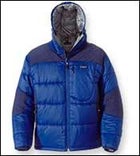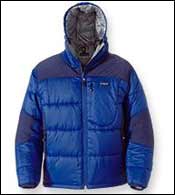Lots of good choices out there, Chris. At their root, PrimaLoft and Thinsulate are not all that dissimilar. They’re both what are called “short-staple” fabrics, meaning they consist of many short pieces of material bonded together (Polarguard, on the other hand, is made from very long fibers that are woven together). Thinsulate is a mix of polyester and olefin, while PrimaLoft is all polyester. The main difference is how they’re manufactured, with PrimaLoft being made in such way that it more closely resembles the wavy texture of actual down. That makes PrimaLoft a little softer, but from what I’ve been told it also makes it more difficult to work with. So it’s not as common as Thinsulate (and similar insulations) in the outdoor market. But I like PrimaLoft┬Śit’s the softest synthetic out there, holds its loft well, and is perhaps the best of the synthetics when wet (although all are pretty good). By Thinsulate Lite I take it you mean Lite Loft, a material developed for the sleeping-bag industry that didn’t do that well. The stuff worked, but tended to look so thin that nobody believed it could actually keep them warm.
 DAS Parka
DAS Parka
That said, I don’t think you’ll see a tremendous variation between jackets made of the different materials. Both Thinsulate and PrimaLoft yield a piece that’s reasonably soft, offers good insulation, and works well in damp weather. PrimaLoft supposedly is a bit less durable than its competitors, but I’ve never seen evidence of that in the real world. I’ve found Thinsulate in a few pieces made by Helly Hansen, Cabela’s, and L.L. Bean. I think a lot of makers use Thinsulate under proprietary brand names, so you wouldn’t actually “know” it’s Thinsulate. PrimaLoft is found in Go-Lite’s Buzz Jacket ($150; www.golite.com) and Integral Designs’ Dolomitti ($210; www.integraldesigns.com). Macpac┬Śnear your part of the world, in New Zealand┬Śmakes a PrimaLoft piece called the Mercury (www.macpac.co.nz), a very light hoodless insulated shell. It’s about $250 in U.S. dollars, so I suppose that makes it about $330 in Oz.
Interestingly, Patagonia┬Śwhich long used a proprietary synthetic fill for its insulated pieces┬Śhas gone heavily into Polarguard, using the newest versions of that material (Delta and 3D) in jackets such as the DAS Parka ($265; www.patagonia.com), a hooded, insulated piece for use in truly crappy weather, when it’s cold and wet. So that’s an option for you as well.
For more expert reviews of weather-beating shells and jackets, check out ║┌┴¤│ď╣¤═° Online’s all-new .


